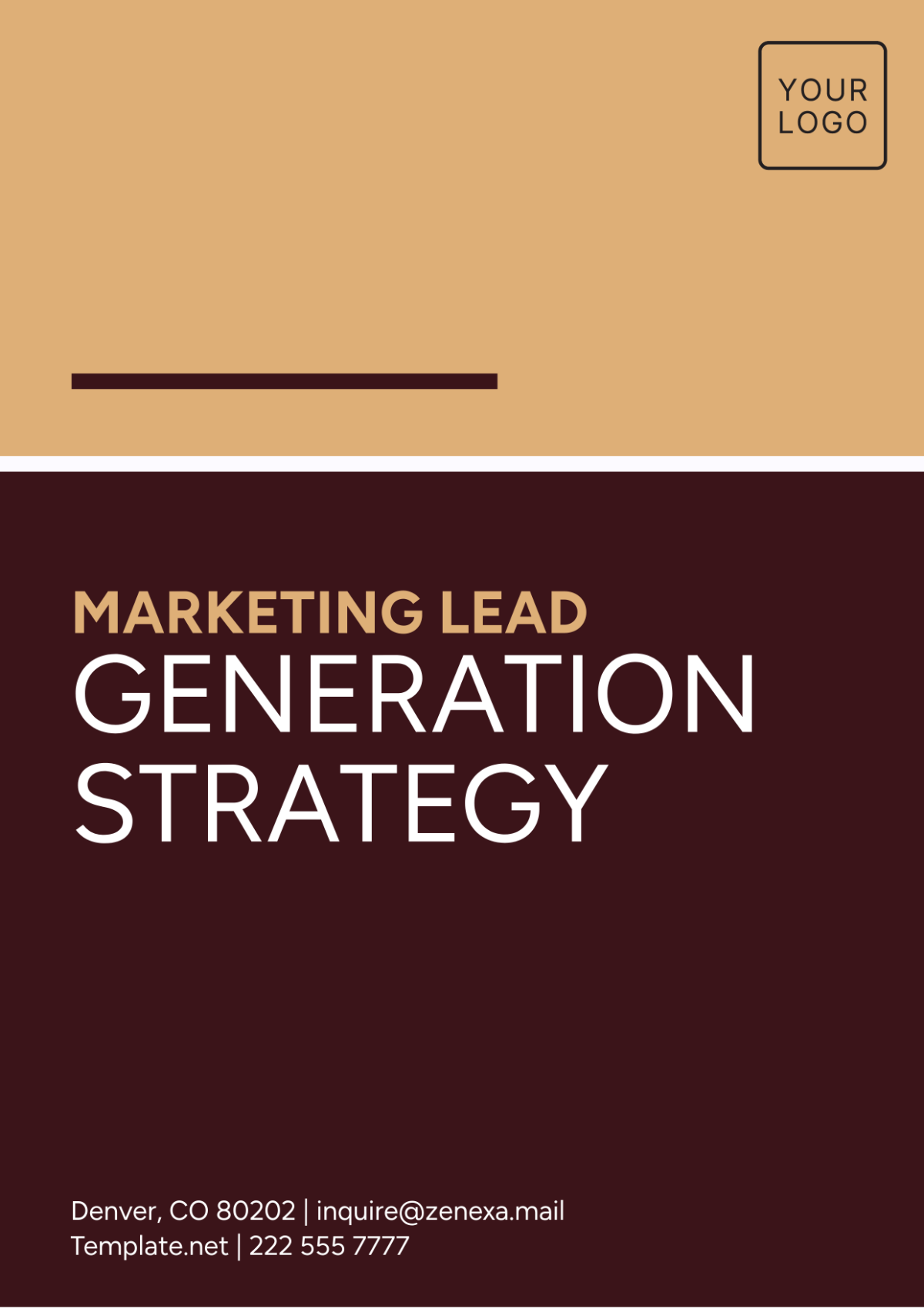Marketing Protocol for Event Security
Introduction and Event Overview
Welcome to the Marketing Protocol for Event Security created by [Your Company Name]. This protocol serves as a comprehensive guide to ensure the successful integration of marketing strategies with event security measures for a safe and memorable event experience.
Event Name: Grand Product Launch
Event Date: October 12, 2053
Event Location: J Building, Hall C, James Street, New York
Event Type: Product Launch
Target Audience: Industry professionals, stakeholders, and media representatives
Understanding these key event specifics is critical for aligning our marketing efforts with the security requirements to create a seamless and secure experience for attendees.
I. Key Stakeholders
Our event's success hinges on the seamless coordination of these key stakeholders, with clear communication and collaboration at every stage:
Event Organizers | Our dedicated event organizers, led by [Your Name], oversee all aspects of event planning, logistics, and execution. They ensure the event's vision and objectives align with our company's goals and standards. |
Security Teams | Our expert security teams, under the leadership of Henry Lit, are responsible for implementing and enforcing safety protocols. This includes access control, surveillance, and emergency response. Their vigilance ensures the well-being of all attendees. |
Marketing Teams | The dynamic marketing teams, headed by Joan Benson, are tasked with promoting the event. They craft compelling messaging, engage target audiences, and drive excitement to maximize attendance and success. |
External Partners | Our trusted external partners provide specialized services critical to event security. These partners, carefully selected based on their expertise, collaborate closely with our internal teams to enhance security measures. |
II. Security and Marketing Integration
The fusion of security and marketing strategies is at the heart of our event's success. This symbiotic relationship is orchestrated to optimize both safety and promotion.
Collaborative Planning: Our security and marketing teams, under the guidance of Henry Lit and Joan Benson, work closely from the event's inception. They jointly assess potential risks, align marketing messages with security protocols, and develop cohesive strategies.
Real-time Updates: Continuous communication channels are established between the teams. This allows for real-time updates on security-related developments and marketing activities, enabling swift adjustments as needed.
Enhancing Attendee Experience: By integrating security seamlessly into marketing efforts, we create an environment where attendees feel safe and can fully engage with our promotional activities. This approach enhances the overall event experience, fostering trust and satisfaction among our audience.
Our commitment to this integration ensures a secure and memorable event for all.
III. Communication Plan
Effective communication is the cornerstone of a safe and well-promoted event. Our comprehensive communication plan outlines protocols and strategies to ensure seamless information flow and response coordination between security and marketing teams:
Regular Updates
Incident Reporting
Crisis Communication
By fostering continuous dialogue and a well-defined communication framework, our plan enhances our ability to address challenges swiftly and maintain a secure and enjoyable event experience for attendees.
IV. Safety Measures
The safety and well-being of our event attendees are paramount. To achieve this, we have implemented a comprehensive set of safety measures designed to ensure a secure environment throughout the event.
Bag Checks: In the interest of everyone's safety, bag checks will be conducted at entry points. Attendees will be advised in advance of the types of items that are prohibited, helping streamline the entry process and enhance security.
Surveillance: State-of-the-art surveillance systems, monitored by trained security personnel, will provide comprehensive coverage of the event area. These systems will detect and respond to any suspicious activities swiftly.
Emergency Response: We have developed detailed emergency response plans in coordination with local authorities. These plans cover a range of scenarios, including medical emergencies, fire incidents, or security breaches. Trained response teams will be ready to act promptly.
Access Control: Our access control measures include thorough attendee screening and identification checks to prevent unauthorized entry. Trained personnel will manage access points, ensuring that only registered attendees gain entry.
Our commitment to safety extends to every aspect of our event. These safety measures aim to create a secure environment, allowing attendees to focus on enjoying the event to its fullest while providing peace of mind to all stakeholders.
V. Training and Education
Ensuring that our event staff, security personnel, and marketing teams are well-prepared and knowledgeable is fundamental to the success of our event. We prioritize comprehensive training and education programs to equip our teams with the skills and understanding needed to excel in their roles.
Event Staff Training: All event staff members undergo rigorous training, led by experienced trainers. They are trained in crowd management, customer service, emergency response, and communication protocols to guarantee a safe and positive attendee experience.
Security Personnel: Our security personnel are highly trained and certified in various security protocols. This includes conflict resolution, crisis management, and the use of security equipment. Their expertise ensures the highest level of safety for all attendees.
Marketing Teams: Marketing teams receive specialized training to effectively communicate safety information to attendees while maintaining the event's overall messaging. They are briefed on potential security scenarios to aid in responsive and consistent messaging.
Continuous Learning: We emphasize ongoing education to keep our teams updated with the latest security and marketing trends. Regular refresher courses and knowledge-sharing sessions are held to ensure everyone remains well-prepared.
By investing in training and education, we empower our teams to handle any situation with professionalism and expertise, ultimately contributing to the overall success of our event.
VI. Incident Response
Our proactive approach to incident response is a critical component of ensuring the safety and security of our event. We have established a comprehensive incident response plan that covers various scenarios, enabling us to address and manage incidents swiftly and effectively.
VII. Public Relations
Our Public Relations (PR) team plays a pivotal role in managing event security-related communications, ensuring transparency, trust, and timely information dissemination. PR is the bridge between the event's security measures and the public, encompassing attendees, media, and stakeholders.
Messaging Alignment: PR collaborates closely with security and marketing teams to ensure consistent messaging. Security-related information is seamlessly integrated into our broader marketing communications, maintaining a positive and reassuring tone.
Crisis Communication: In the event of a security incident, the PR team is the primary communication hub. They activate our crisis communication plan, which includes predefined messaging templates and designated spokespersons to provide accurate and timely updates to attendees and the media.
Media Relations: Our PR team maintains strong relationships with media outlets and reporters. This ensures that the right information is conveyed to the public, minimizing misinformation and maintaining our event's credibility.
Attendee Information: Attendees' safety is paramount. PR coordinates with security and marketing to deliver essential safety instructions and updates to attendees through various channels, including event apps, on-site signage, and social media.
Stakeholder Communication: PR also manages communication with stakeholders, including sponsors and partners, keeping them informed about security measures and incident response protocols.
Our PR team ensures that accurate information flows seamlessly in all directions, fostering trust and confidence.
VIII. Legal and Compliance
At [Your Company Name], we are dedicated to operating within the bounds of US marketing legal and standard guidelines. Ensuring compliance with relevant laws, regulations, and standards is a fundamental aspect of our event planning process.
Privacy Regulations: We strictly adhere to data privacy regulations such as the General Data Protection Regulation (GDPR) and the California Consumer Privacy Act (CCPA). Attendees' personal information is handled with the utmost care and transparency.
Permits and Licenses: We obtain all necessary permits and licenses required for the event, including those for venue operation, food service, and alcohol if applicable. These permits are obtained well in advance to ensure legal compliance.
Safety Standards: Our security measures comply with industry standards and best practices. We collaborate with local authorities to align with their security guidelines and obtain necessary approvals for event safety plans.
Contractual Agreements: We enter into contracts with vendors, sponsors, and partners that outline our expectations, obligations, and legal protections. These agreements are carefully reviewed by legal experts to ensure compliance and minimize legal risks.
By upholding rigorous legal and compliance standards, we not only ensure the legal integrity of our event but also enhance our reputation as a responsible and trustworthy event organizer. Our commitment to legal compliance underscores our dedication to the safety, security, and satisfaction of all event stakeholders.
IX. Budget and Evaluation
The successful execution of our event, while maintaining high standards of security and marketing, relies on effective financial planning and continuous evaluation. This section provides an overview of our budget allocation and the process for assessing our event's success.
Expense Category | Security Budget ($) | Marketing Budget ($) |
Security Personnel | $5,200 | |
Surveillance Systems | $2,000 | |
Access Control Measures | $2,500 | |
Emergency Response | $500 | |
Promotional Materials | $1,5000 | |
Advertising Campaigns | $2,000 | |
Staffing | $2,500 | |
Social Media Advertising | $1,000 | |
Total | $10,000 | $7,000 |
X. Evaluation
A. Monitoring: Our teams monitored security and marketing efforts during the event. KPIs included attendee engagement, incident response times, and social media reach.
B. Post-Event Evaluation
Attendee feedback: Gathered through surveys, indicating overall satisfaction and any security or marketing concerns.
Incident reports: Reviewed to assess the effectiveness of security measures and response.
Financial performance: Compared actual expenses to the budget, identifying cost efficiencies.
C. Improvement Initiatives
Based on attendee feedback, we plan to enhance signage for clearer access control instructions.
Incident response times were well within acceptable limits, but we aim to refine communication between security and marketing teams for even swiffer responses.
Social media advertising showed strong engagement; we plan to allocate a larger portion of the marketing budget for social media in future events.
This straightforward budget and evaluation summary demonstrate our commitment to financial accountability and continuous improvement in delivering safe and successful events.
Marketing Templates @ Template.net

















































